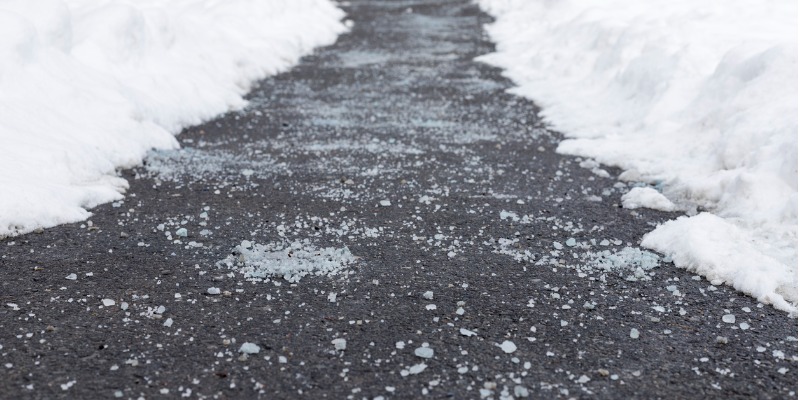
There are a lot of misconceptions in the Snow & Ice industry about salt, salt use and the “Science of Salt” itself, which can often lead to its misuse or misapplication.
The type of salt used in the snow & ice industry is commonly known as rock salt, which is a naturally occurring mineral form of sodium chloride (NaCl). This crystalline form of NaCl is mined from underground salt beds, the result of dried up enclosed lakes or inland seas.
We all know that salt is used to melt snow and ice, but this, technically is not exactly true. The solid granules (or crystals) of rock salt do not actually effect the melting process. Salt is a hydroscopic material, which means that it will attract water and heat from its environment. That is why your leather shoes get “dried out” and wrinkled when covered with salt.

This type of reaction is known as an Endothermic Reaction, which is a chemical reaction that absorbs heat. Salt absorbs heat, but in doing so reduces its effective operating temperature.
A chemical reaction that gives off heat is called an Exothermic Reaction. Magnesium Chloride (MgCl2) or Calcium Chloride (CaCl) gives off heat when used, making them less reliant on air temperature and thus able to work at a lower range. Their costs, however, are significantly higher as well.

Salt actually works by forming a brine solution and reducing the Freeze Point of water. This happens in the following way:
In non-laboratory conditions, certain factors can have a large influence on salt’s effectiveness.
Ground temperature for instance, air temperature, the type of “pavement” , and water content of the snow can all effect the efficiency of rock salt. Even exposure to direct sunlight (thermal energy) or heat from underground parking lots can play a role. This is why having a number of options for treating snow & ice under various conditions is important for effective management of hazardous winter conditions.
– Ken Jorgenson